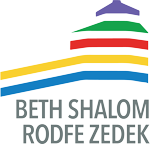In his introduction to the book of Exodus, or “Sefer
Sh’mot,” Nahum Sarna calls attention to the fact that this entire book covers
the events of only 2 years. As David Hays often reminds us, the book does not
tell us what the 400 years of life in Egypt were like for the Israelites.
Instead, there is a sharp focus on God’s intervention in our history in a
particular sequence of events.
This parasha begins with the initial acts of resistance to
Pharaoh’s oppression, mostly carried out by women. How ironic that Pharaoh
calls for the baby boys to be thrown into the Nile, when it is women – the
midwives, Pharaoh’s daughter, and Moses’ mother and sister – who begin the
process the leads to redemption from Egyptian slavery.
The parasha continues to follow the early life of Moses,
culminating in the selection of Moses as God’s partner in carrying out God’s
redemptive plan. Having just read the book of Genesis, the stories of our
matriarchs and patriarchs still echoing in our memory, it is interesting to
note the parallels and contrasts between Moses’ life and the lives of the
earlier ancestors, especially Jacob.
Again we have a miraculous birth, but the miracle isn’t due
to a barren woman finally giving birth. Moses is one of three siblings, but it
isn’t sibling rivalry that causes Moses to flee his home. In fact, Aaron and
Miriam aid Moses in important ways. Moses finds his wife at a well and spends
many months living with his father-in-law, but this father-in-law is not a
trickster, and he easily allows Moses to return to Egypt with his wife and son.
We’ll investigate these similarities and differences together and see if we can
uncover an underlying message.
I look forward to starting this powerful book with you this
Shabbat!

No comments:
Post a Comment